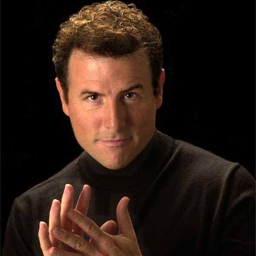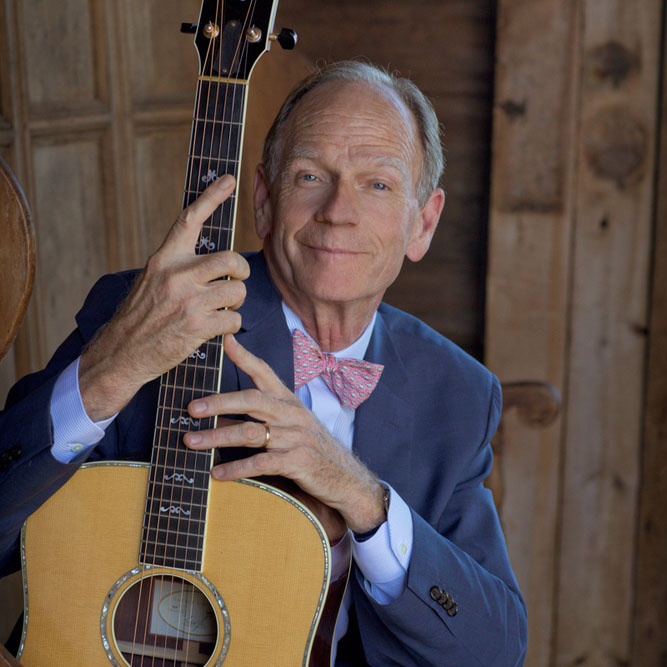The Mystery and Majesty of Egypt 2.0
February 17 to March 2, 2023

The pages of this itinerary are an updated version of what we sent out a year ago. When we mailed out that first itinerary, the response was tremendous. We soon filled the trip and went to a waiting list. We had more people who wanted to go than we could accommodate. Then, with the outbreak of Omicron, just 10 days before the start of our trip, the CDC put Egypt (and 27 other countries) on a list that suggested that Americans should not travel there. Because the CDC bulletin was a “suggestion” rather than a ban on travel, all of our hotels, boats, restaurants, guides, busses, etc. had no obligation to return any money. Our guests had sent us money and we had already paid our vendors in Egypt for everything up front. Everyone was immediately left with tough decisions, and in the end about half of the people that signed up decided to stay at home and stay safe. The good news is that the people we were dealing with in Egypt (like people everywhere, really) are honest and want to do the right thing. Everybody ended up losing a little, but in the end our upcoming trip next February is the result of lots of people working together to do the right thing. And thus, we are able to offer those who missed the first trip a second chance without a loss of any money. And this also gives a chance for those of you who were not signed up another chance to participate in one of the most wonderful trip we’ve ever put together.
I’ve traveled a lot in my life and I’ve always wanted to go to Egypt. It’s always been at the top of my bucket list, but I had never been. The enforced idleness of the last couple of years sharpened my desire to wisely use the time and travel experiences that I have remaining. I asked myself why I had not traveled to Egypt and I decided that the simplest answer is that as I traveled to other places in the world I was waiting for peace to come to the Middle East. Faced with this reality it became clear that, with this mindset, I would probably never see Egypt.
So I decided to make the journey. My life of travel has given me a wonderful rolodex of talented and accomplished people to call on for advice. Serifa Zuhur has traveled with us before. She is an academic and national security scholar of the Middle East and Islamic world. She was a Distinguished Visiting Professor of National Security Studies from 2004 to 2006, then Research Professor of Islamic and Regional Studies from 2006 to 2009 at the U.S. Army War College's Strategic Studies Institute. In other words, she was way overqualified for my request to recommend a good guide to help me visit Egypt. She recommended Nibal Aziz, an Egyptologist who turned out to be one of the best guides I’ve met in my entire life.
As I went to Egypt I had limited hopes that I would find it a suitable place for a Castles and Concerts tour. Over the years Georgia and I took several scouting tours where we decided it just wasn’t a good choice to bring the group. However, by the time I returned home, I was convinced that going to Egypt with the group would be the most exciting and rewarding trip that we’ve done since the opera in Monaco in 2009. The enclosed itinerary is an invitation to join us. This itinerary has more pages than other itineraries we’ve done. That’s because I’ve taken the time to try to share with you some of the many things that I learned about the history and the people of Egypt. Some of these were a complete surprise to me. And all of this background will serve to explain the reasons why I believe we are now in a window of time that is the best opportunity to visit Egypt in our lifetime. So, even if you know that you are unable to travel with us, I’d suggest and hope that you would find value and enjoyment in reading through the itinerary.
Please let us know if you have any questions or there’s any way we can help.
Cairo International is Africa’s second busiest airport (after Johannesburg). There are nonstop flights from all of Europe’s major hubs. For instance, Lufthansa flies three non-stops per day from Frankfurt. So you can arrive in about the same time as it takes to get to Rome, Vienna or any other non-hub European city (about 15 hours from SFO). We’ve hired a top-of-the-line hospitality company to greet you individually at the airport and transport you to our hotel in comfortable new vans.
We will transfer you to the Hilton Heliopolis, a new 5-star property, conveniently located in proximity to downtown and the airport. Earlier this year we stayed in Giza, near the pyramids. We enjoyed the view of the pyramids, but because Cairo is a city of 23 million people, every time we left the hotel it took an hour and a half to get anywhere. We feel that we’ve made the right choice in staying nearer to the center of things this time.
We want to provide some flexibility for your travel schedule. We will start welcoming people for a pretrip in Cairo on Friday February 17. On the evening of Monday February 20 we will officially begin the main trip with a dinner in a private room in our hotel. We will have a brief orientation and introduce you to our guides and maybe even have a little music before we begin our adventures at the Pyramids the next morning.
To decide what day you’d like to arrive, see the section concerning the pretrip and early arrivals at the end of this itinerary. Remember that in flying from the states, you arrive a day later than your departure.
Ancient Memphis is now Cairo. The Old Kingdom Pharaohs built their palaces and their pyramids here two and a half thousand years before Christ. Then, in about 1500BC, the New Kingdom pharaohs moved the capitol to Luxor. Cairo became the capital once again in modern times. Today we’ll visit monuments from the middle ages and a Mosque built by the founder of modern Egypt.
The Citadel was built by Saladin in the 1100’s to defend Cairo from the attacking crusaders. The fortress still stands on the highest hill of Cairo. On the summit, in the interior of the fortress, Mohamed Ali Pasha constructed one of the world’s most beautiful mosques. Built in 1840, it is still a mosque but also serves as a museum. This allows us to go inside. Here’s a little note on this part of the Muslim world. Although Egypt is 85% Muslim and 15% Christian, the country is ruled by secular laws and president Sisi made a point last year of attending Christmas mass and wishing a Merry Christmas to Egypt’s Christians.
After our visits we will enter Al-Azur Park, an oasis of beauty and calm in one of the densest urban landscapes in the world. We have taken a lovely pavilion for a leisurely afternoon of music and fine dinning. We’ll have a free night that evening and we’ll help you with ideas on how you can visit some of the wonderful restaurants of Cairo. The next morning, we will fly the entire group to Luxor, home to the great dynasties of the New Kingdom.
It’s only an hour flight from Cairo to Luxor so we will arrive mid-morning. Then, while our porters move our bags to the hotel, we’ll take our first excursion. We’ll visit the great temple of Luxor, built in about 1400BC. This is the temple where the Pharaohs were crowned. Here we will first meet Ramses II and Tutankhamen. After a guided visit and lunch, we will move into our hotel, the Jollie Ville, a wonderful resort on its own island in the Nile.
A word here on our choice of accommodation: In our 2021 trip we used a cruise boat for a four-day cruise on the Nile. On the second day we had one person test positive for covid. Two days later there were more than a dozen cases. We believe that the rapid spread was because of the circulating air systems used in cruise boats. Everyone on the trip was completely vaccinated, and so no one got very sick, but it was a real inconvenience for some people. The U.S. has now removed the requirement for testing to reenter the states, so it will be less of a hassle in the future. But we want to do everything we can to minimize the chance of infection. We will be staying in individual cabanas at this resort and it will be a great place to party for a few days while we visit the sites around Luxor.
Castles and Concerts will probably never visit a more inhospitable place than the Valley of the Kings. For a thousand years the Pharaohs were buried here. The funeral procession to bury a Pharaoh would have taken several days to get there from Thebes. The nineteenth century archeologists would have taken two days to get there from Luxor with a mule. Today we can ride twenty minutes on good roads, in air-conditioned comfort, to the parking lot at the entrance to the valley. Then we can get aboard these cute little trolleys to enter the valley. Once in the valley, we can stroll on sidewalks to the entrances to several tombs. Many others remain inaccessible because they were dug halfway up the sides of the valley walls. In the valley are sixty-two tombs that have been discovered during the last two hundred years. They are numbered in the order of their discovery with no reference to the dates the Pharaoh ruled. So Number 62 is Tutankhamen, found by Howard Carter in 1922. And these tombs are among the most astounding discoveries ever made.
As I made this journey, which was not at all difficult, I tried to imagine how much more impact this experience would have had on me in the old days, when it took months to get to Luxor and days to trek into the valley. And I felt a little envious of the impact they must have felt…… I needn’t have wasted my time on such thoughts. As I entered the coolness of the first tomb and my eyes adjusted from the light of the mid-day sun outside to the gentle light of the tomb I was literally staggered. It took my breath away and I had to hold on to the handrail. I later told my wife that it had been the most impressive travel day of my entire life.
Today we’ll move south (upriver toward the center of Africa) to Aswan. The mountains start here. And In the old days it is here that the first cataract (waterfall) made continued passage by boat impossible. From here the great camel caravans fanned out all over Africa. The Nile is the longest river in the world and we are not even halfway to the Nile’s origin at Lake Victoria. It is here at Aswan, in 1902, that the British built the largest masonry dam in the world. It provided flood relief and irrigation to large new portions of Egypt.
It worked well. Then between 1960 and 1970 Egypt decided to construct the largest embankment dam in the world, the Aswan High Dam. Because Egypt had nationalized the Suez Canal in 1956, the British convinced America not to help the Egyptians. Egypt turned to the Russians for help. The Russians successfully constructed the dam. This was a major setback for US diplomacy and the repercussions from that bonehead decision continue to reverberate through our world today.
In any case, we have another of antiquity’s grand monuments here; Philae. We will board small boats to get to the island for our visit. Later we will check into the five-star Movenpick Hotel and another grand evening of feasting, merriment and music.
Having visited several other great monuments of ancient Egypt, two things stand out when you visit Philae. One is the remarkable state of its preservation. This is explained by the fact that it was built during the reign of the last dynasty of Pharaohs, the Ptolemys. So it’s more than 2,000 years newer than the other monuments. It was still an active temple in the 500’s. The other strange thing is the lack of color. The monuments in Luxor were all brightly colored and much of that color remains. Philae is all raw stone. That’s because the lake behind the first Aswan Dam (1902) submerged the temple under water. Before they finished the Aswan High Dam in 1970 they took the temple apart stone by stone and moved it a quarter mile to higher ground. But seventy years under water had washed away all traces of the original paint. Strange but true.
For our visit in January of this year we made Abu Simbel an optional add-on. But the magnificence of this site and and its surroundings made it second only to the pyramids in its impact. So we’ve made it an integral part of this version of our trip. And we enjoyed the Nubian people and the hotel on the lake so much that we added a second night here.
The great temple complex at Abu Simbel was built by Ramses II in about 1250 BC. It was one of the wonders of the ancient world. It became famous again in our modern world when in 1968 UNESCO led the drive to save these temples from drowning in the new lake created by the High Aswan Dam.
Unlike the temples at Philae, which were constructed with tens of thousands of cut stones, those at Abu Simbel were carved directly into the face of a cliff. So they were essentially one big (very, very big) piece of sculpture, still connected with the mountain. Moving these temples to higher ground may be the biggest archaeological project of all time.
Abu Simbel is 140 miles south of Aswan and there is no regular air service between Aswan and Abu Simbel. So in order to visit we will take our vans three and a half hours from Aswan to Abu Simbel. The roads are decent, but not interstate highways. In Abu Simbel we will spend the night in a really lovely resort built on the lake. We will visit a Nubian Village for a wonderful lunch. The next day we will visit Abu Simbel with our guides, then return to the resort for a final evening of music, great food and comradery.
The next day (March 1) we will fly back to Cairo. Most, but not all flights back to Europe or North America depart between 11PM and 2AM. We will be back in the Hilton Heliopolis by late afternoon of March 1. This hotel is just 15 minutes from the international airport. Everyone on the trip will have a room in the Hilton that night (included in the price of the trip). Dinner is on your own for this night. The hotel has six different restaurants, so you should probably plan to dine in the hotel. Our schedule will allow you to depart on an evening flight on March 1 or one of the early AM flights on March 2. Or you can spend the whole night in the hotel and depart at your leisure later in the day or evening on March 2.
There is so much to see and experience in Egypt. You must see the Valley of the Kings, the grand temples of Luxor and Karnack, Hatshepsut’s temple and the other great monuments of upper (South) Egypt. Thus, our 10-day tour has left us only two days of touring in Cairo. We’ll spend a day at the pyramids and another day exploring Muslim Cairo. This leaves several important sites unvisited. If you want to arrive a few days early we can remedy this situation; here are some other things you should see:
The Great Pyramids did not just appear five thousand years ago without antecedents. And no, they were not built by aliens. Fifteen miles south of the Great Pyramids is Saqqara. It is here, during the 3rd dynasty, that the architects for the pharaohs first started constructing pyramids. These are the oldest stone buildings still standing on earth. While Giza was the hip place to build your pyramid in the 4th dynasty (2500BC to 2200BC), in the time both before and after the great pyramids, Saqqara was where you wanted to spend eternity. And here were constructed thousands of shrines and temples holding the mummified remains of hundreds of thousands of individual people and animals. If you visit, you will find out why the mummification of animals was big business in Ancient Egypt. Covering three thousand years of history, both the monuments and the museum here are fantastic.
Just three years ago they opened a new super-modern museum to properly display the mummies of all the Pharaohs. You probably know that Tutankhamen’s tomb is the only one to survive intact from ancient times. The fact that almost all of the Pharaoh’s mummies have survived is a curious tale. Come and meet the Pharaohs in person and learn how it happened.
This October is planned the opening of a huge new Cairo museum. They’ve been at it for ten years now. If they do get it open we will surely visit it. However, of all the museums, I still prefer the Victorian Era museum with rows & rows of glass and wood display cases. This is where Boris Karloff and Lon Chaney first climbed out of the mummy cases with bandages dragging to scare the bejesus out of me as a kid. And it still has that perfect vibe. Maybe we’ll see if we can get a night-time tour.





We’ll have several of our regular performers also, including Tom and Matt Montgomery, Chip Mallari and Vince Littleton. And if past is prologue, there will probably be several more performers by the time we meet in Cairo.
ARRIVAL: We will start our adventure when we meet you at the Cairo International Airport. We can meet you on any day or night between February 17 and February 20. Remember that when you fly from the states you will arrive a day later than your departure. From the 17th to the 20th we will explore Cairo in small groups. Our first evening with all of us together will be Monday Feb 20 at the Hilton Heliopolis.
DEPARTURE: We will have you back at the Hilton by late afternoon on March 1. All guests will have a room that night at the Hilton. However, because the majority of outbound flights depart between 11PM and 2AM you may want to just use the room to rest a few hours before your flight late at night on the 1st or early morning on March 2. Alternatively, you can spend the whole night on the 1st and leave any time you choose on March 2 or any day thereafter. When we know your individual schedules we will arrange your transport back to the airport, which is only 15 minutes away.
WEATHER: The end of February is the nicest time of the year. It should be in the 80’s during the day and 60’s at night. Bring a light jacket for evenings. You can leave your umbrella at home. Most years there is no rain at all in Egypt. All its water comes from the Nile.
DRESS: During the day, dress for comfort, especially with good walking shoes. Our evenings will be casually elegant, but we will not plan to have a special dress up night. Men can bring a jacket, but please leave the neckties at home for this one. This choice is to allow and encourage you to pack lightly.
WOMEN IN A MUSLIM COUNTRY: There is much talk that women need to be careful in their dress while traveling in this part of the world. At least in Egypt, this talk is overblown. During our visits, we saw lots of young women tourists and they were dressed like they would be anywhere else in the world. Our lead guide, Nibal, has run her own company for twenty years. She wears a head scarf and that’s it. Most of her employees are men, and both she and the men were clearly comfortable with her as the boss. When we visit a Mosque, men should remove their hats and women should cover their hair just like we would all do in entering St Peter’s in Rome. I found that concerns about dress for women tourists to be virtually nil.
WHAT’S INCLUDED: All accommodations, group air and ground transportation including to and from the airports in Cairo, Luxor and Abu Simbel. Breakfast, lunch and dinner each day, with the exception of two nights “on your own” for dinner. All the excursions and concerts. House wines are included with dinners and we’ll have great parties every night.
NOT INCLUDED: Round trip air from the states, and beverages and extras that you sign for.
COSTS: Main Trip: The cost for the ten-night, 11-day package is 8,950 per person, double occupancy. A single occupancy supplement is $1,200. We have taken deluxe rooms in each of the four properties where we will stay. We are happy to upgrade you to the next level of suites if they are available. To upgrade in each hotel, add $200/day per person. If upgrades are unavailable for any of the nights, we will refund this upgrade charge. Tell us early if you want an upgrade.
COSTS: PreTrip: We’d like to provide you with as much flexibility as possible. Please see the page about the pre-trip to see what we have planned. If you want to arrive on the 17th and take all the excursions for three days, the cost is $2,350. If you want to arrive on the 18th or 19th we’ll be happy to prorate the cost depending on your arrival date. In any case we’ll meet you at the airport whenever you arrive.
DEPOSIT: A deposit of $1,000 per person will hold your place in this grand adventure. This deposit will be fully refundable for any reason until September 1, when of we will ask you to pay half the balance. The final payment will be due December 1.
INSURANCE/CACELATIONS: If there is something that might prevent you from attending, we encourage you to take out trip insurance. Your deposits are fully transferable to someone who takes your place and if you cancel for any reason we will refund all of your money if the trip is full and we can fill your spot.
WOULD YOU LIKE TO LEARN MORE ABOUT EGYPT? If I open Prime Video on my TV and enter the search word “egypt”, the first thing that pops up is “The Story of Egypt”. This is Joann Fletcher’s work. She is a British Egyptologist who is so enthusiastic about her work that it’s easy to get swept up in the stories she tells. It is a four-part series of one hour each. I’ve watched them all twice and I will surely watch them again before we embark on our journey.




















